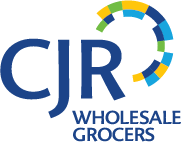As a grocery store owner, navigating unforeseen challenges is part of the job. Whether it’s natural disasters, supply chain disruptions, or public health emergencies, having a robust contingency plan in place is essential for ensuring business continuity and serving your community effectively. CJR Wholesale has come up with a comprehensive checklist to help grocery store owners build a resilient and fast acting plan.
Risk Assessment
Begin by conducting a thorough risk assessment to identify potential threats and vulnerabilities to your grocery store. Consider factors such as location, climate, supplier dependencies, and regulatory requirements. Assess the likelihood and impact of various scenarios, ranging from severe weather events to public health crises, to prioritize your planning efforts.
Emergency Communication
Establish clear communication plans in sharing critical information to employees, customers, suppliers, and stakeholders during emergencies. Maintain up-to-date contact lists, including phone numbers, email addresses, and alternative communication methods. Develop protocols for communicating important updates, instructions, and safety precautions in as timely of a manner as you can.
Inventory Management
Maintain proper inventory levels of essential products to meet customer demand during emergencies. This will include identifying key products with long shelf lives or high demand products during crises, such as non-perishable foods, water, batteries, and first aid supplies. Implement inventory tracking systems to monitor stock levels, expiration dates, and replenishment needs to avoid shortages or overstocking.
Supply Chain Resilience
Diversify your supplier base and establish contingency plans for sourcing alternative suppliers or distribution channels in case of disruptions. Build strong relationships with reliable suppliers who prioritize transparency, flexibility, and collaboration. By developing a backup transportation and logistics solution, you can ensure timely delivery of goods, even in challenging circumstances.
Operational Continuity
Develop comprehensive procedures and protocols to maintain operations during emergencies. This involves establishing backup power sources, such as generators or battery backups, to keep essential systems running in the event of power outages. Make sure to train employees on emergency response protocols, including evacuation procedures, first aid training, and crisis management strategies. It’s always better to be over prepared incase of emergencies.
Health and Safety Measures
Prioritize the health and safety of employees and customers by implementing sanitation and hygiene protocols. Provide personal protective equipment (PPE), such as masks, gloves, and hand sanitizer, for employees and customers, and enhance cleaning and disinfection practices for high-touch surfaces, equipment, and common areas to minimize the risk of illness transmission.
Financial Preparedness
Maintain a proper amount of financial reserves and insurance coverage to mitigate the financial impact of emergencies that may come to your grocery store. Review and update insurance policies to ensure they adequately cover potential risks and liabilities, including property damage, business interruption, and liability claims. Develop financial contingency plans, such as emergency funds or lines of credit, to weather economic downturns or revenue losses.
Creating a well thought out contingency plan is important for grocery store owners to effectively navigate emergencies and safeguard their business, employees, and customers. By conducting this checklist, grocery store owners can enhance their readiness to respond to surprise challenges and uncertainties. With careful planning and preparation, you can build resilience and adaptability into your grocery store operations, ensuring that you can continue to serve your community, even in the face of adversity.








